Contact now:info@jameschem.com
Soil and groundwater remediation
Green and Low-carbon Restoration Matters
• The combined development of industry and agriculture, along with population growth, is facing significant challenges to nationwide soil health. To date, the world's abundant hazardous elements growth metrics in the soil have been impacted by unchecked expansion in a variety of human activities, including industrial farming, chemical pollution, such as heavy metals and organic chemicals, and excess nutrients such as nitrogen and phosphorus. The contaminants from sewage discharges, industrial activities, agricultural activities, and urban runoff are dumped directly into water, including lakes, rivers, oceans, aquifers, reservoirs, and groundwater, which can significantly disrupt ecosystems. For instance, excessive nutrients and phosphorus lead to algal blooms and low-oxygen waters, which can kill fish and seagrass, thus reducing essential fish habitats and causing fisheries and aquaculture production losses. Certain pollutants, especially persistent organic pollutants (POPs) and heavy metals, are difficult to degrade and can accumulate in the environment, eventually impacting human health through the food chain.
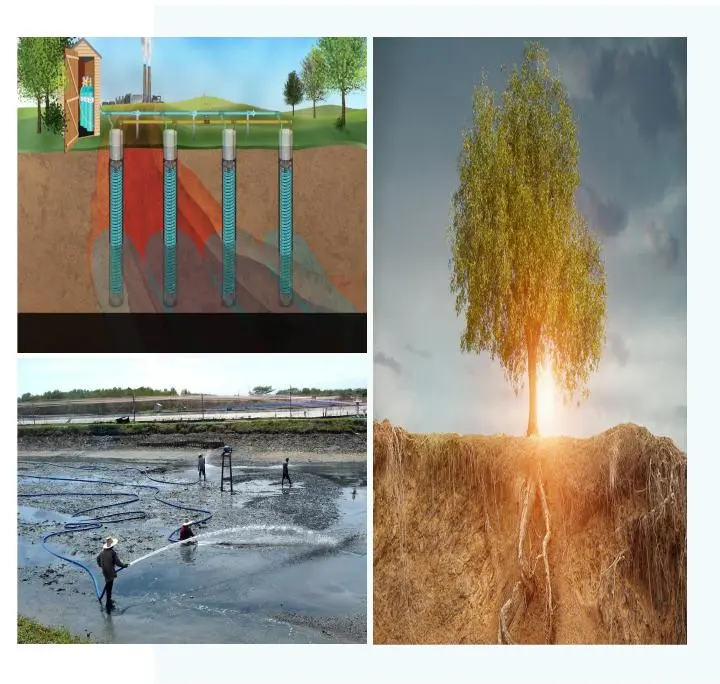 |
|
The following contaminated areas which require environmental remediation:
• Contaminated soil remediation: Pesticide residues, heavy metals, and organic matter domains contamination.
• Water contamination remediation: Eutrophication, toxic wastewater, and petroleum-based groundwater pollution.
• Contaminated sediment remediation: Contaminated sediment remediation: Heavy metal pollutants, organic compounds, and natural radioactivity in bottom sediments. |
Sustainability Plan for Green and Contaminated site Management of Groundwater and Soil Remediation:
• Although natural attenuation of contaminated soil and groundwater only requires a monitoring system, which has lower remediation costs compared to aggressive treatment technologies, long remediation periods may be needed, and the contaminated plume may migrate beyond property boundaries and sensitive receptors. The biggest challenges come up when the commingled plumes are massive. The projects are so large and the cost estimates for remediation are so daunting, who is responsible for cleaning up those commingled plumes in groundwater and soil? However, bioremediation will be less than optimal if the microorganisms' nutritional and physiological requirements are not met. Enhanced bioremediation technologies increase biodegradation rates by supplying those nutrients and electron acceptors, or control other factors that can be rate-limiting.
 |
|
Bioremediation:
• Bioremediation is a managed or spontaneous process in which microbiological processes are used to degrade or transform contaminants to less toxic or nontoxic forms, thereby mitigating or eliminating environmental contamination. The primary goal is to either eliminate or significantly reduce the concentration of organic pollutants. This is crucial for meeting environmental regulations and protecting human health and ecosystems. The technology is being used to remove pollutants from soil, groundwater, wastewater, sludge, industrial waste, and gases. |
• There are many types of bioremediation technologies. However, the remediation practices are roughly divided into two types: in situ and ex situ techniques. Ex situ soil remediation technologies refer to excavating the contaminated soil from the original location to other places for subsequent restoration. In-situ techniques, on the other hand, aim to reduce or eliminate contaminants on-site through various methods, such as bioremediation, chemical treatment, or physical processes.
• Bioremediation of organic compounds is a complex process, and its application to specific compounds is based on an understanding of the microbiology, biochemistry, genetics, metabolic processes, structure, and function of natural microbial communities. On-site investigation and performance of treatability studies are crucial before implementing a bioremediation process. Microbiology must be combined with engineering to develop effective bioremediation processes.
|
Advantages of In Situ Bioremediation
• Easy to implement and cost-effective, compared to traditional chemical and physical treatment methods. • Environment-friendly (no damage to the soil environment that is essential for plant growth), does not generate secondary pollution, reduces the migration rate of pollutants, has few residual problems, and has positive effects. • Suitable for commingled plumes that are larger than the treatment zone. In situ bioremediation can often be used to treat contaminants that are sorbed to aquifer materials or trapped in pore spaces.
|
Enhanced in Situ Bioremediation Technologies:
|
Bioventing:
• The bioventing, known as aerobic bioremediation, biological system treats contaminated soil in situ by injecting atmospheric air into unsaturated soil. The air provides a continuous oxygen source, which enhances the growth of microorganisms naturally present in the soil. Additional additives such as ozone or nutrients may also be used to stimulate microbial growth. Bioventing accelerates the natural processes. |
|
|
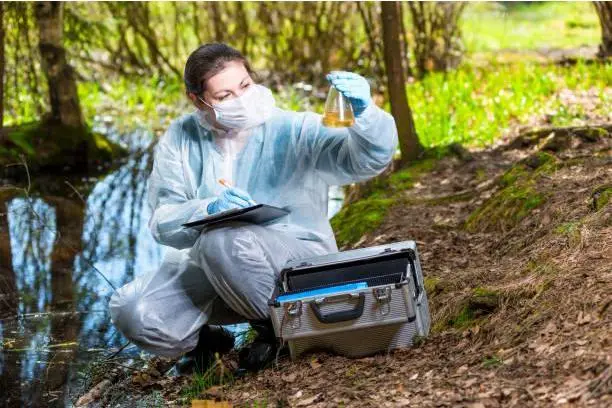 |
|
Air Sparging/Biosparging:
• Air sparging involves injecting a gas(usually air/oxygen)under pressure into the saturated zone to transfer volatile compounds to the unsaturated zone for biodegradation. The air injected below the water table increases the oxygen concentration and enhances the rate of biological degradation of organic contaminants by naturally occurring microorganisms. |
|
Liquid Delivery Systems:
• Liquid delivery systems are used for bioremediation of contamination in the saturated zone. The delivery system, consisting of wells or trenches, is designed to circulate adequate amounts of nutrients and oxygen through the zone of contamination to maximize contaminant biodegradation. |
|
|
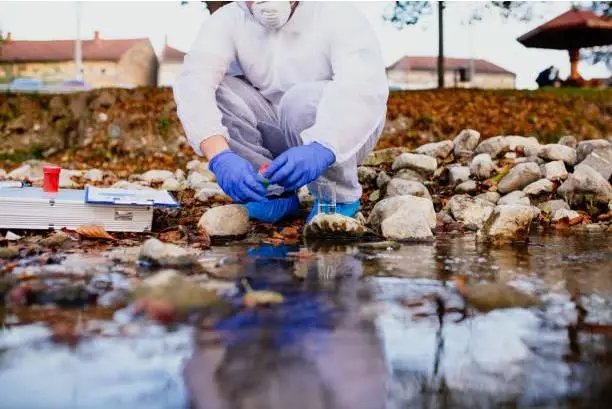 |
|
Alternate Electron Acceptors -Anaerobic Bioremediation:
• When there is the addition of oxygen, it is preferred to use oxygen as the electron acceptor. Alternate electron acceptors can be used for bioremediation in the saturated zone. Oxygen provides more energy, which is derived from aerobic respiration, than other microbial processes. Various types of anaerobic bacteria exist in nature that can substitute for oxygen as anaerobic electron acceptors, and allow microbial degradation of organic contaminants. However, compared with anaerobic bioremediation, aerobic bioremediation is faster, and the degradation of organic compounds is more effective. |
|
Phytoremediation:
• Plants extract various nutrients, including metals, from their surrounding environment, like soil and water, and some plant species have the unique ability to accumulate and store large amounts of metals in their tissues. Phytoremediation uses plants to clean up contaminated soil and groundwater, taking advantage of plants' natural abilities to take up, accumulate, and/or degrade constituents of their soil and water environments. These techniques could provide cost-effective methods of remediating soil and groundwater contaminated with metals, radionuclides, and various types of organics, with less secondary waste and less environmental impact than would be generated using traditional remediation methods. |
|
|
• Oxygen is the preferred electron acceptor and is necessary for aerobic biodegradation. In the aqueous phase, residual concentrations of oxygen >1.0 mg/L should be monitored to ensure oxygen levels are not rate-limiting. In the gaseous phase, residual oxygen levels should be maintained at >2 to 4%(by volume)to ensure sufficient oxygen is present for effective aerobic bioremediation of organic contaminants. We can enhance aerobic bioremediation through various methods such as bioventing, liquid delivery systems, hydrogen peroxide infiltration, or ozone injection.
|
James Chem provides a range of Green and Low-carbon In-Situ Bioremediation products for the Global Environmental Governance Project.
|
1. Calcium Peroxide
• Calcium peroxide, as an oxygen-releasing compound, increases the oxygen content of contaminated areas, enhancing biological activity and thus promoting natural attenuation. Injection of calcium peroxide slurry through diffusion tubing into soils or groundwater creates a zone of sustained high DO (dissolved oxygen)in groundwater around the injection well and changes the dominant groundwater conditions from anaerobic to aerobic. The oxygen-enhanced zone is able to biodegrade benzene and ethylbenzene, which had been relatively resistant to natural attenuation in the plume under the initial anaerobic conditions. Thus, calcium peroxide can be used advantageously for the oxygenation of the hypolimnion. Calcium peroxide can be applied to soil as a 25%-65% slurry. The typical application rate is 0.1% to 1.0% by weight of soil, which is roughly 2 to 6 pounds per cubic yard, or about 500 milligrams per liter (mg/L). For activation, the soil needs to have a moisture content of 5%-10% and a pH of 1% slurry at 25℃ is approximately 11-12.
2. Magnesium Peroxide
• Magnesium peroxide provides a high relative oxygen delivery efficiency and, when moist, releases oxygen slowly. Generally, the product will continue to release oxygen for about six months, following the reaction:2MgO2+2H2O2->2 Mg(OH)2+O2 The hydrated product is magnesium hydroxide, Mg(OH)2, which can be used as a slurry in the saturation zone, and biofouling is inhibited by the elevated pH. With these methods, a saturated zone source treatment with an oxygen release compound slurry targets dissolved phase contamination plus sorbed material in the saturated, capillary fringe and smear zones. This technology can also form a barrier to reduce the responsibility of groundwater pollution beyond the property boundary.
3. Hydrogen Peroxide
• There are some specific limitations when hydrogen peroxide is used as an electron acceptor to enhance the bioremediation, including the following:
- -Concentrations of H2O2 greater than 100 to 200 ppm in groundwater are inhibiting to microorganisms.
- -Microbial enzymes and high iron content of subsurface materials can rapidly reduce concentrations of hydrogen peroxide and reduce the zone of influence.
4. Sodium Percarbonate
• This product enhances the biodegradation of aerobic bacteria by providing oxygen into the foundation with its mechanism of action includes:
- -Oxidation
- -Promoting bioremediation
5. PFAS Removal Solutions
• Additionally, landfills are a common method of waste disposal. When sediment infiltrates solid waste, leachate is produced, which may contain hazardous pollutants (including PFAS) in liquid form. PFAS, due to its high stability and poor biodegradability, may not be completely removed from the environment. PFAS can migrate from contaminated soil to groundwater and flow into natural water sources, potentially contaminating surface and groundwater used for drinking. Perfluorooctanoic acid (PFOA) and perfluorooctane sulfonate (PFOS) are known as the most detected per- and polyfluoroalkyl substances (PFAS) in various environmental compartments.
• James Chem offers treatment solutions for PFAS removal up to 99%. We work together under the new global PFAS regulations and strive to contribute to soil and groundwater remediation, as well as the health of human food and drinking water.
*Please find James Chem domain experts for more details.
|
James Chem,Your Trusted Partner
We not only have standardized products but also provide a one-on-one customized solution. No matter what challenges we meet, we solve them together. Should you have any questions or needs related to soil and groundwater remediation, please do not hesitate to contact our service consultant. |
|
|
Related Products
 |
 |
 |
|
| Calcium Peroxide | Magnesium Peroxide | Sodium Percarbonate | |
Green and Low-carbon Restoration Matters
• The combined development of industry and agriculture, along with population growth, is facing significant challenges to nationwide soil health. To date, the world's abundant hazardous elements growth metrics in the soil have been impacted by unchecked expansion in a variety of human activities, including industrial farming, chemical pollution, such as heavy metals and organic chemicals, and excess nutrients such as nitrogen and phosphorus. The contaminants from sewage discharges, industrial activities, agricultural activities, and urban runoff are dumped directly into water, including lakes, rivers, oceans, aquifers, reservoirs, and groundwater, which can significantly disrupt ecosystems. For instance, excessive nutrients and phosphorus lead to algal blooms and low-oxygen waters, which can kill fish and seagrass, thus reducing essential fish habitats and causing fisheries and aquaculture production losses. Certain pollutants, especially persistent organic pollutants (POPs) and heavy metals, are difficult to degrade and can accumulate in the environment, eventually impacting human health through the food chain.

The following contaminated areas which require environmental remediation:
• Contaminated soil remediation:
Pesticide residues, heavy metals, and organic matter domains contamination.
• Water contamination remediation:
Eutrophication, toxic wastewater, and petroleum-based groundwater pollution.
• Contaminated sediment remediation:
Contaminated sediment remediation: Heavy metal pollutants, organic compounds, and natural radioactivity in bottom sediments.
Sustainability Plan for Green and Contaminated site Management of Groundwater and Soil Remediation:
• Although natural attenuation of contaminated soil and groundwater only requires a monitoring system, which has lower remediation costs compared to aggressive treatment technologies, long remediation periods may be needed, and the contaminated plume may migrate beyond property boundaries and sensitive receptors. The biggest challenges come up when the commingled plumes are massive. The projects are so large and the cost estimates for remediation are so daunting, who is responsible for cleaning up those commingled plumes in groundwater and soil? However, bioremediation will be less than optimal if the microorganisms' nutritional and physiological requirements are not met. Enhanced bioremediation technologies increase biodegradation rates by supplying those nutrients and electron acceptors, or control other factors that can be rate-limiting.

Bioremediation:
• Bioremediation is a managed or spontaneous process in which microbiological processes are used to degrade or transform contaminants to less toxic or nontoxic forms, thereby mitigating or eliminating environmental contamination. The primary goal is to either eliminate or significantly reduce the concentration of organic pollutants. This is crucial for meeting environmental regulations and protecting human health and ecosystems. The technology is being used to remove pollutants from soil, groundwater, wastewater, sludge, industrial waste, and gases.
• There are many types of bioremediation technologies. However, the remediation practices are roughly divided into two types: in situ and ex situ techniques. Ex situ soil remediation technologies refer to excavating the contaminated soil from the original location to other places for subsequent restoration. In-situ techniques, on the other hand, aim to reduce or eliminate contaminants on-site through various methods, such as bioremediation, chemical treatment, or physical processes.
• Bioremediation of organic compounds is a complex process, and its application to specific compounds is based on an understanding of the microbiology, biochemistry, genetics, metabolic processes, structure, and function of natural microbial communities. On-site investigation and performance of treatability studies are crucial before implementing a bioremediation process. Microbiology must be combined with engineering to develop effective bioremediation processes.
|
Advantages of In Situ Bioremediation
• Easy to implement and cost-effective, compared to traditional chemical and physical treatment methods. • Environment-friendly (no damage to the soil environment that is essential for plant growth), does not generate secondary pollution, reduces the migration rate of pollutants, has few residual problems, and has positive effects. • Suitable for commingled plumes that are larger than the treatment zone. In situ bioremediation can often be used to treat contaminants that are sorbed to aquifer materials or trapped in pore spaces.
|
Enhanced in Situ Bioremediation Technologies:
Bioventing:
• The bioventing, known as aerobic bioremediation, biological system treats contaminated soil in situ by injecting atmospheric air into unsaturated soil. The air provides a continuous oxygen source, which enhances the growth of microorganisms naturally present in the soil. Additional additives such as ozone or nutrients may also be used to stimulate microbial growth. Bioventing accelerates the natural processes.
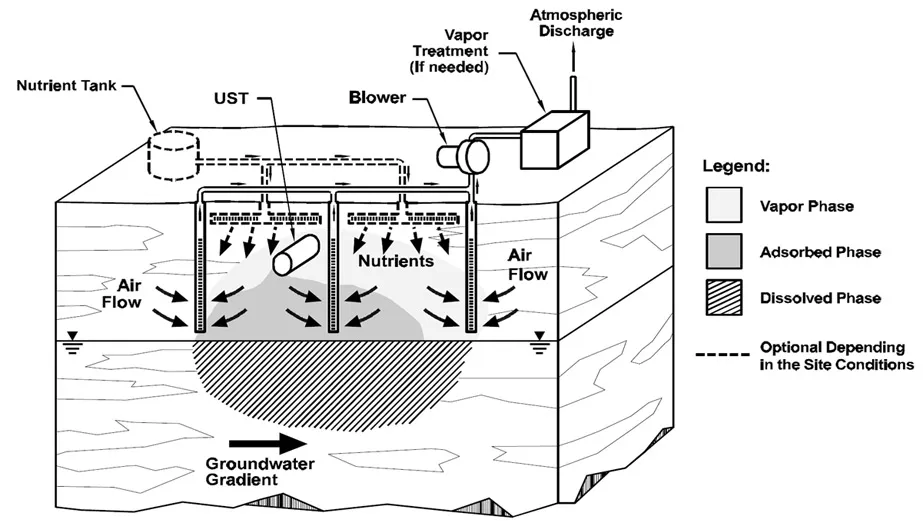
Air Sparging/Biosparging:
• Air sparging involves injecting a gas(usually air/oxygen)under pressure into the saturated zone to transfer volatile compounds to the unsaturated zone for biodegradation. The air injected below the water table increases the oxygen concentration and enhances the rate of biological degradation of organic contaminants by naturally occurring microorganisms.

Liquid Delivery Systems:
• Liquid delivery systems are used for bioremediation of contamination in the saturated zone. The delivery system, consisting of wells or trenches, is designed to circulate adequate amounts of nutrients and oxygen through the zone of contamination to maximize contaminant biodegradation.
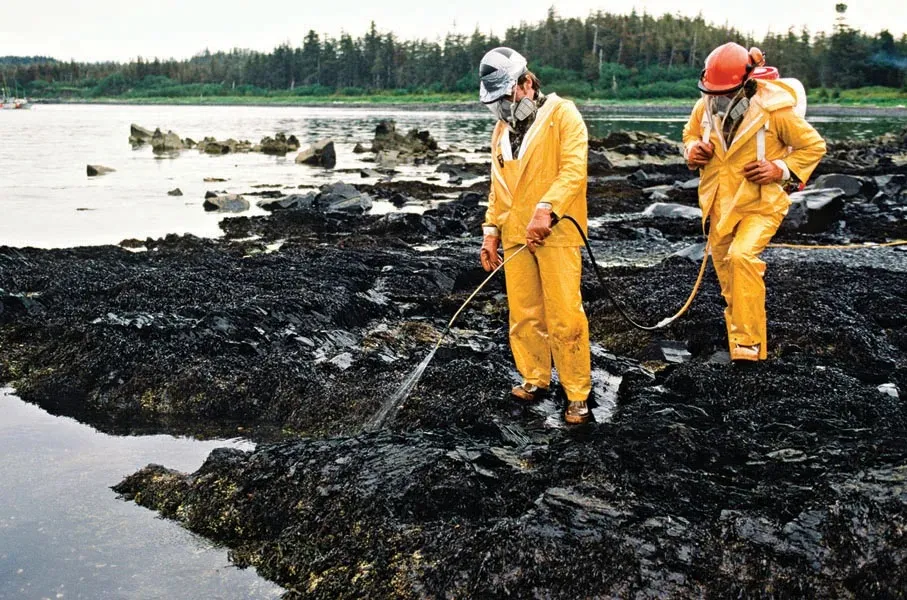
Alternate Electron Acceptors -Anaerobic Bioremediation:
• When there is the addition of oxygen, it is preferred to use oxygen as the electron acceptor. Alternate electron acceptors can be used for bioremediation in the saturated zone. Oxygen provides more energy, which is derived from aerobic respiration, than other microbial processes. Various types of anaerobic bacteria exist in nature that can substitute for oxygen as anaerobic electron acceptors, and allow microbial degradation of organic contaminants. However, compared with anaerobic bioremediation, aerobic bioremediation is faster, and the degradation of organic compounds is more effective.

Phytoremediation:
• Plants extract various nutrients, including metals, from their surrounding environment, like soil and water, and some plant species have the unique ability to accumulate and store large amounts of metals in their tissues. Phytoremediation uses plants to clean up contaminated soil and groundwater, taking advantage of plants' natural abilities to take up, accumulate, and/or degrade constituents of their soil and water environments. These techniques could provide cost-effective methods of remediating soil and groundwater contaminated with metals, radionuclides, and various types of organics, with less secondary waste and less environmental impact than would be generated using traditional remediation methods.
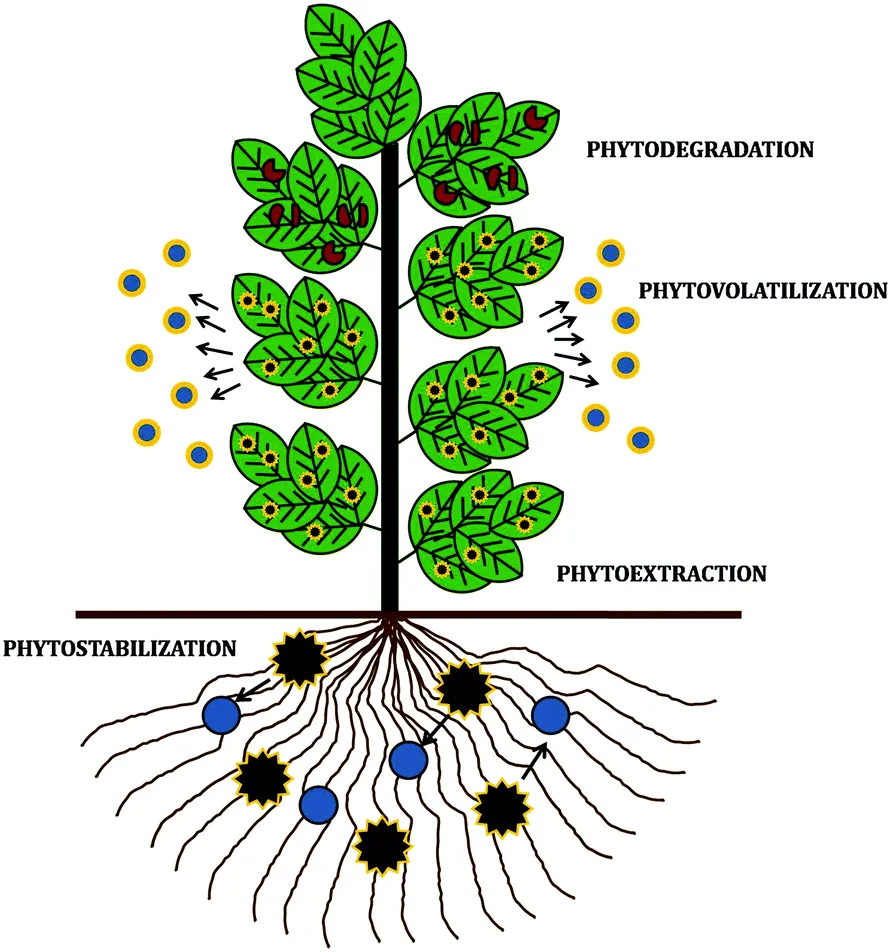
• Oxygen is the preferred electron acceptor and is necessary for aerobic biodegradation. In the aqueous phase, residual concentrations of oxygen >1.0 mg/L should be monitored to ensure oxygen levels are not rate-limiting. In the gaseous phase, residual oxygen levels should be maintained at >2 to 4%(by volume)to ensure sufficient oxygen is present for effective aerobic bioremediation of organic contaminants. We can enhance aerobic bioremediation through various methods such as bioventing, liquid delivery systems, hydrogen peroxide infiltration, or ozone injection.
|
James Chem provides a range of Green and Low-carbon In-Situ Bioremediation products for the Global Environmental Governance Project.
|
1. Calcium Peroxide
• Calcium peroxide, as an oxygen-releasing compound, increases the oxygen content of contaminated areas, enhancing biological activity and thus promoting natural attenuation. Injection of calcium peroxide slurry through diffusion tubing into soils or groundwater creates a zone of sustained high DO (dissolved oxygen)in groundwater around the injection well and changes the dominant groundwater conditions from anaerobic to aerobic. The oxygen-enhanced zone is able to biodegrade benzene and ethylbenzene, which had been relatively resistant to natural attenuation in the plume under the initial anaerobic conditions. Thus, calcium peroxide can be used advantageously for the oxygenation of the hypolimnion. Calcium peroxide can be applied to soil as a 25%-65% slurry. The typical application rate is 0.1% to 1.0% by weight of soil, which is roughly 2 to 6 pounds per cubic yard, or about 500 milligrams per liter (mg/L). For activation, the soil needs to have a moisture content of 5%-10% and a pH of 1% slurry at 25℃ is approximately 11-12.
2. Magnesium Peroxide
• Magnesium peroxide provides a high relative oxygen delivery efficiency and, when moist, releases oxygen slowly. Generally, the product will continue to release oxygen for about six months, following the reaction:2MgO2+2H2O2->2 Mg(OH)2+O2 The hydrated product is magnesium hydroxide, Mg(OH)2, which can be used as a slurry in the saturation zone, and biofouling is inhibited by the elevated pH. With these methods, a saturated zone source treatment with an oxygen release compound slurry targets dissolved phase contamination plus sorbed material in the saturated, capillary fringe and smear zones. This technology can also form a barrier to reduce the responsibility of groundwater pollution beyond the property boundary.
3. Hydrogen Peroxide
• There are some specific limitations when hydrogen peroxide is used as an electron acceptor to enhance the bioremediation, including the following:
- -Concentrations of H2O2 greater than 100 to 200 ppm in groundwater are inhibiting to microorganisms.
- -Microbial enzymes and high iron content of subsurface materials can rapidly reduce concentrations of hydrogen peroxide and reduce the zone of influence.
4. Sodium Percarbonate
• This product enhances the biodegradation of aerobic bacteria by providing oxygen into the foundation with its mechanism of action includes:
- -Oxidation
- -Promoting bioremediation
5. PFAS Removal Solutions
• Additionally, landfills are a common method of waste disposal. When sediment infiltrates solid waste, leachate is produced, which may contain hazardous pollutants (including PFAS) in liquid form. PFAS, due to its high stability and poor biodegradability, may not be completely removed from the environment. PFAS can migrate from contaminated soil to groundwater and flow into natural water sources, potentially contaminating surface and groundwater used for drinking. Perfluorooctanoic acid (PFOA) and perfluorooctane sulfonate (PFOS) are known as the most detected per- and polyfluoroalkyl substances (PFAS) in various environmental compartments.
• James Chem offers treatment solutions for PFAS removal up to 99%. We work together under the new global PFAS regulations and strive to contribute to soil and groundwater remediation, as well as the health of human food and drinking water.
*Please find James Chem domain experts for more details.

James Chem,Your Trusted Partner
We not only have standardized products but also provide a one-on-one customized solution. No matter what challenges we meet, we solve them together. Should you have any questions or needs related to soil and groundwater remediation, please do not hesitate to contact our service consultant.
Related Products
Calcium Peroxide
Magnesium Peroxide
Sodium Percarbonate
